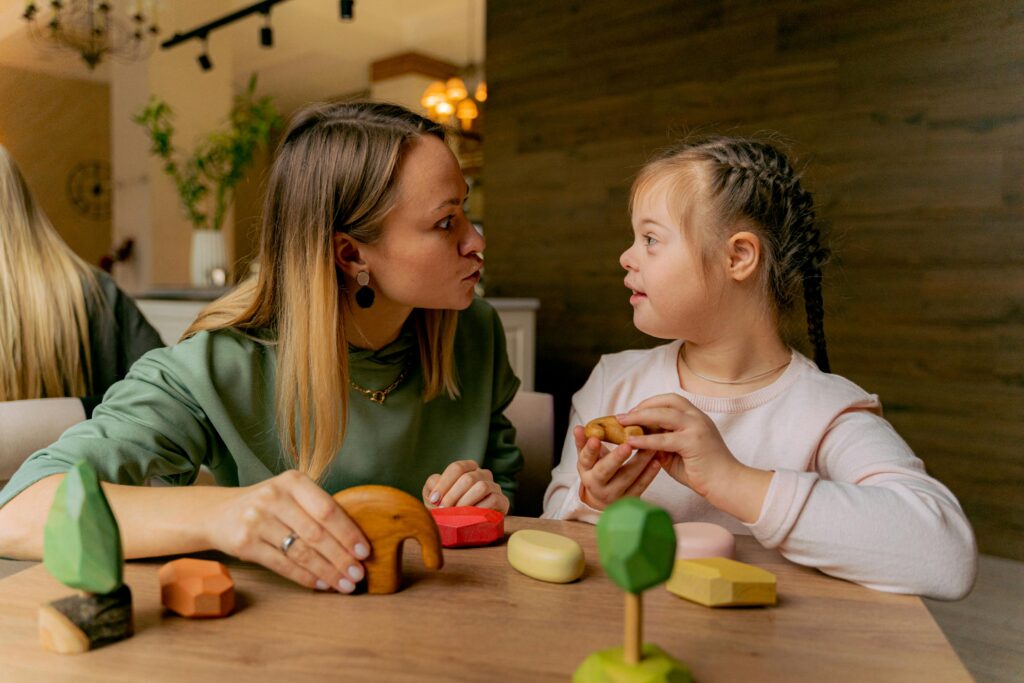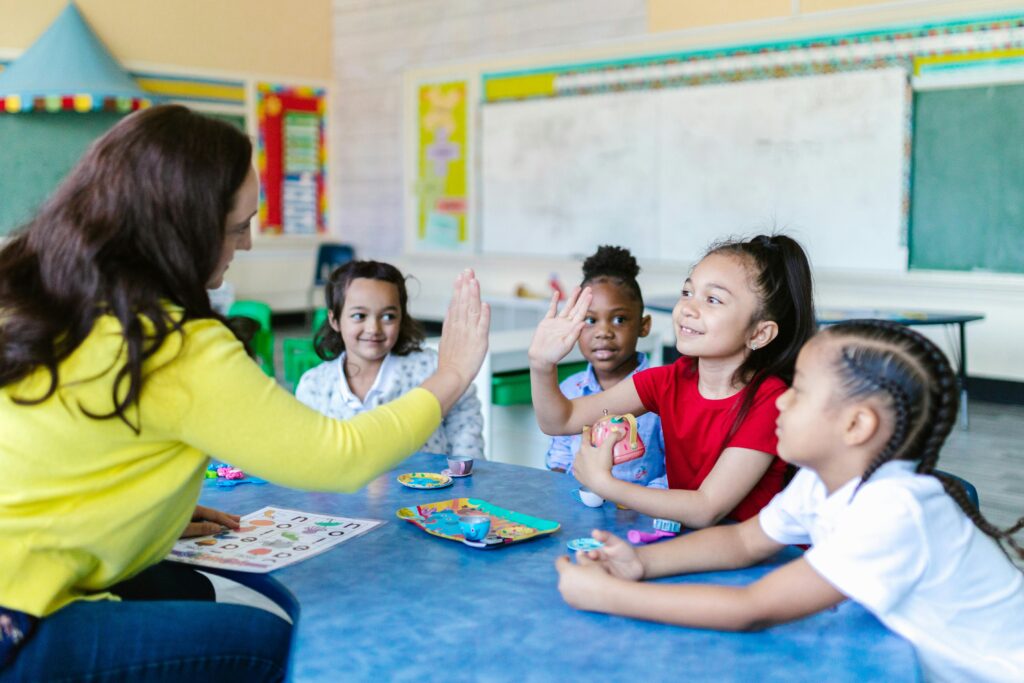
26 Positive Reinforcement Examples You Need to Know
rebekah
April 29, 2025
Every teacher dreams of a classroom where their students are engaged, respectful, and eager to learn. While there’s no magic wand you can wave to create this kind of environment, there are positive reinforcement examples that can help immensely.
The key to using positive reinforcement effectively, though, lies in being flexible in how you use it.
Here are some tips on how to do just that, as well as 26 positive reinforcement examples to spark some creativity.
What is Positive Reinforcement in Behavior?

Positive reinforcement is a behavioral strategy grounded in operant conditioning. B.F. Skinner based this theory on a simple idea: actions that are rewarded are more likely to be repeated.
Think of it as training your students like Pavlov’s dogs, but instead of salivating at a bell, they’re submitting homework on time because you gave them a high five last time they did.
This idea actually harks back to Thorndike’s “law of effect,” which essentially says behaviors followed by desirable consequences tend to stick around, while those followed by negative ones tend to disappear (source).
Turns out, students respond a lot better to encouragement than criticism. Who knew?
But before you start handing out candy for the slightest smile, there’s an art to effective positive reinforcement. Done wrong, it can lose its impact. Done right, it can shape behavior, build trust, and even improve your Monday morning attendance.
What Are the Different Types of Positive Reinforcement?

Positive reinforcement isn’t one-size-fits-all. There are a few different categories, and knowing the difference between them will help you tailor your methods so they’re more authentic and more impactful.
Natural Reinforcement
This is the kind most teachers use instinctively without even realizing it. A student raises their hand to answer a question correctly, and they receive the positive consequence of feeling smart, confident, and valued. It’s organic, it’s spontaneous, and it’s highly effective.
Tangible Reinforcement
Stickers, small toys, or even “extra credit” coupons fit the bill here. A tangible reward can feel exciting and immediate, making it a solid choice for younger students. As a side tip, make sure you always tie the reward to effort or improvement, not just outcomes. Otherwise, you’re teaching them to expect rewards for the bare minimum (bad news for their future bosses).
Social Reinforcement
Sometimes, words are enough. Praise like “Great job, Emma!” or “I really admire how you tackled that problem, Lucas!” can go a long way in reinforcing positive behavior, especially if they come from other classmates and not just you. Social reinforcement also includes smiles, thumbs-ups, or even casual fist bumps.
Token Reinforcement
Remember those colorful coins, sticker charts, or points systems you might have experimented with? These fall under token reinforcement. Students earn points, stars, or cards for good behavior, which they can later exchange for a bigger reward (think choosing a class activity or being line leader). It’s essentially a childhood version of your airline miles program—except your students probably will never procrastinate redeeming their prizes.
26 Positive Reinforcement Examples You Need to Know

If there’s one strategy every teacher needs to know about, it’s positive reinforcement.
Not sure where to start? Here are 26 positive reinforcement examples to set you off on the right foot.
1. Verbal Praise
Let’s be honest. Who doesn’t love a good compliment? Sometimes, a simple, heartfelt “Good job!” is all it takes to make a student’s entire day. Use verbal praise like you mean it.
Be specific. Instead of a vague “Well done,” say, “I really appreciate the way you helped your classmate with that problem. That’s teamwork!” The trick is to be genuine. Kids can sniff out fake compliments faster than a dog sniffs out snacks.
Compliments also work wonders in small group settings. Highlight their efforts, and they’ll stay motivated. Plus, they’re free, so shower them liberally.
2. Reward Systems
Classroom reward systems are your best friend when you’re trying to keep everyone on track. Think sticker charts, punch cards, or even “caught being good” tickets. You could make it as creative as you like. Once students hit a milestone, they earn a reward. It could be as grand as extra recess time or as simple as getting to pick the next class game.
If you teach older students, tweak this a little. Extra credit, seating changes, or a pass on that one day’s question about last night’s reading.
3. Handwritten Notes
A handwritten note might feel old-school, but trust me—it’s a positive reinforcement powerhouse. Writing a short note about a student’s hard work or progress and giving it to them privately can mean the world. It’s a personal touch that lets them know you’re paying attention.
Bonus points if the note has a funny doodle or some stickers (because, yes, even high schoolers secretly love stickers). You can also send the note home to their parents. Suddenly, the student’s a rockstar at home, too.
4. Leadership Opportunities
Want students to feel like a boss? Well, make them one! Giving leadership opportunities as rewards is a surefire win. Assign titles like “line leader,” “classroom tech assistant,” or “teacher’s helper.” It sounds simple, but you’d be surprised how eager students are to take charge—even if their “charge” is handing out pencils.
Leadership roles motivate students to step up. They’re earning a reward, but they’re also learning responsibility.
5. Use it to Strengthen Classroom Community
Acknowledge students who set good examples like being kind, staying inclusive during group projects, or encouraging their deskmate. But here’s the twist. Don’t just reward the do-gooder. Recognize collaborative success by celebrating the ripple effect.
For instance, if a student helps their neighbor solve a tricky problem, give both of them a small reward. Reinforcing community behavior makes students feel like they’re all part of something bigger (it also makes dealing with group work a hundred times more bearable).
6. Incentive Jars
This one’s a classic and for a good reason—it works. Grab a jar and some marbles (or candy, or pom-poms, whatever speaks to you). Each time the class does something great—like staying quiet during work time or everyone turning in homework on time—add something to the jar.
When the jar’s full? It’s celebration time. Class party, movie day, extra break time—you decide. It’s a team effort reward system that gets everyone rooting for good behavior.
7. Positive Postcards
Here’s a fun one. Send students “positive postcards” in the mail. Picture this—your student comes home, grabs the mail, and finds a postcard from their teacher saying, “You rocked that science project!” Automatically the coolest kid on the block.
It’s not just about making their day, though. It also lets parents see the effort their child’s putting in. Remember—the goal is to encourage and build goodwill.
8. Public Recognition
Some students love the spotlight. Celebrate their achievements with a bit of public acknowledgment. Maybe it’s a shoutout during morning announcements or putting their artwork front-and-center on the class bulletin board.
9. Daily Affirmations
Start every day on a positive note—literally. Daily affirmations are short statements of encouragement you share with the entire class. Things like, “You are capable of great things today,” take minimal effort but leave a lasting impact. You could even have students write their own affirmations and share them with the class.
10. Achievement Badges
You know how gym memberships keep you going by giving you rewards for every milestone? Achievement badges work the same way in the classroom. Create badges or certificates for milestones like “Most Improved,” “Homework Hero,” or even “Top Listener.”
The best part? These can be digital too if your classroom’s more tech-savvy.
11. Personal Check-Ins
Taking five minutes for a one-on-one conversation can change a student’s attitude entirely. Whether it’s asking how they’re doing or congratulating them on an improvement you’ve noticed, personal check-ins send the message that you care. And once students feel valued, they’re more likely to engage positively in the classroom.
One tip: keep these check-ins casual and avoid making the student feel like you’re singling them out in front of peers. That one-on-one time is where the magic happens.
12. Choice Boards
Who doesn’t love options? Use choice boards to give students some say in their assignments. For example, they could choose between writing a poem, creating a poster, or performing a skit.
This taps into different learning styles while providing students the freedom to learn and express themselves the way they’re most comfortable. Plus, you’ll get better results because they’ll genuinely enjoy the task.
13. Celebrating “Small Wins”
Positive reinforcement isn’t just for the big moments. The real trick is capturing those small wins—the times a disruptive student manages to stay focused, or when the shy one contributes an idea in class. Highlight those moments, and you’ll encourage students to try harder without focusing only on perfection.
Being able to recognize and celebrate progress—even if it’s small—makes a world of difference.
14. Friendly Competition
Everyone loves a little friendly rivalry. Set up a relay race or a team trivia game to get students involved. The rewards can be silly, like bragging rights or a classroom trophy.
Keep the focus on fun, though. Competition is only productive when the environment stays supportive and lighthearted.
15. Incorporating Personal Interests
Here’s a trick that works like magic—tap into what your students already care about. Got a student obsessed with dinosaurs? Use them as the theme of a spelling challenge where winners get a “dino champion” badge. Know a class that’s super into soccer? Introduce a game-based lesson where team players earn rewards.
This is especially useful because it shows your students that you see them as individuals, not just a homogenous group. Recognizing personal interests is a reinforcement strategy that keeps students engaged effortlessly.
16. Digital Reinforcement
Because we’re living in a digital world (and, no, Madonna references are not required), positive reinforcement has gone high-tech. Class management apps like ClassDojo allow you to award points for good behavior. Students love the immediate feedback, and you’ll appreciate how it streamlines tracking progress.
Another digital option? Email or text a quick note of praise to parents. Something like, “Jamie was super helpful during today’s science project!” When parents hear about this, they’ll reinforce the positive behavior at home, creating a win-win situation for everyone involved.
17. Continuous Reinforcement
Here’s the thing about positive reinforcement—it only works if it’s consistent. A student can’t guess when or why they’ll be rewarded. By continuously reinforcing good behavior, you’re setting the tone that this is the standard.
Of course, that doesn’t mean handing out stickers every ten seconds. Consistency doesn’t mean over-saturation. Just make sure that when you praise or reward, it’s meaningful and regular enough to be effective.
18. Class Superlatives
If you’re really looking to make an impact, go all out with public recognition in the form of superlatives. Announce class achievements like “Best Homework Average This Month” or “Punctuality Pro Award.” These don’t have to be complicated or expensive. Simple certificates printed on fun paper can be just as effective as trophies.
19. Nonverbal Acknowledgments
Actions speak louder than words, right? A thumbs up, a nod of approval, even a high five can be all the reinforcement a student needs. These small gestures require no time at all, and they still pack a punch when it comes to motivating students.
20. Sticky Notes
Another nonverbal option is the classic sticky note of appreciation. Imagine a student opening their math workbook to find a note saying, “You crushed it on yesterday’s test!” Just trust me—it’ll make their day.
21. Simple Eye Contact
Eye contact combined with a smile can also do loads of good. Positive reinforcement doesn’t always need to come with much fanfare.
22. Group Reinforcement
Picture this: your entire class working together to achieve a common goal of good behavior. Wild, right? But it’s totally possible. Group reinforcement strategies—think brownie points on the board or filling a jar with marbles to earn a class pizza party—tap into collective motivation.
This works especially well in younger groups. The students hold each other accountable and start to feel that sweet, sweet sense of teamwork. For example, you announce that every time the class works quietly for ten solid minutes, they’ll earn another marble in the jar. The more marbles, the faster the reward. Watch them shush each other faster than you can say “indoor voices.”
23. Privilege-Based Positive Reinforcement
When tangible rewards start to lose their charm for your students (it happens), look to privileges instead. For instance, have a student lead the line to recess, help with a classroom task they like, or even sit in the coveted teacher’s chair during an afternoon reading session.
Classroom privileges tend to work because they feel like a reward while also promoting a sense of responsibility. Trust your students to handle roles, and they’ll usually rise to the occasion. Plus, rotating through these privileges ensures everyone gets a chance to shine, so there’s no chance of a reward becoming stale.
24. Gamify It
Who doesn’t love turning day-to-day monotony into a game? Gamification works as fantastic positive reinforcement, particularly for competitive or activity-loving students. Create a point system where students earn points for finishing assignments on time, helping peers, or staying focused.
You can also use classroom-wide goals to drive cooperative behavior. Hit a certain number of points as a group, and everyone earns a reward—like a pajama day or a few minutes of extra recess. This not only motivates individuals but also fosters teamwork. Everybody wins.
25. Make it Funny
Add a dash of humor. If a student solves a math problem correctly, shout something ridiculous like, “Move over, Einstein!” Or make it a classroom ritual to share a goofy high-five after stellar participation. You’d be surprised how much kids eat this up.
26. Tap Into Creativity
Sometimes, you want your reinforcement to stick with them as more than just “cool, I got a sticker.” Why? Because creating distinct, memorable moments can make good behavior feel genuinely rewarding rather than transactional.
Keep it fun. Give them bragging rights. Catch them doing something great today? Hand them a silly trophy or crown them “King/Queen of Class Effort” temporarily. The point is, make sure you tap into your unique sense of humor and creativity here to really make an impact with your efforts at positive reinforcement.
Final Thoughts

Want to maximize the power of positive reinforcement? Aim for clear communication, consistency, and (above all) genuine engagement. Importantly, research suggests a 3-to-1 or 5-to-1 praise-to-correction ratio is ideal. To put it simply, give three praises for every correction—or five if you’re aiming for A+ rapport.
And yes, we get it—it may feel unnatural to dial back on disciplinary statements while boosting acknowledgment of small wins. But trust us, reinforcing good behavior works better than constantly calling out bad habits.
Positive reinforcement isn’t just about building better behavior—it’s about building better humans. Your students take the good habits they reinforce in the classroom into the real world, where those habits will serve them for a lifetime.
And if this approach feels daunting, don’t worry—you’re already one step ahead just by reading this post. Give positive reinforcement a try tomorrow. You’ll be surprised how quickly attitudes shift, atmospheres change, and smiles abound (both theirs and yours).
FAQ
What is the best positive reinforcement?
The “best” type depends on your students. Younger kids might enjoy tangible rewards like stickers, while older students respond better to social or natural reinforcement. Experiment and observe which method gets the best response in your classroom.
What are the 4 types of positive reinforcement?
Natural, tangible, social, and token reinforcement are the main categories. Understanding the differences helps you adapt your strategies based on age groups, classroom settings, and behavior goals.
What is an example of positive reinforcement?
Imagine a student consistently forgets to push in their chair. Instead of nagging, you wait until they do it correctly and say, “Thanks for remembering to push in your chair, Ana—that’s really thoughtful!” This encourages the behavior to stick.
How to discipline a child with positive reinforcement?
The key is to shift your focus from punishing the negative to encouraging the positive. For example, instead of scolding for speaking out of turn, praise students who raise their hands. Soon, others will follow suit to earn that praise.


